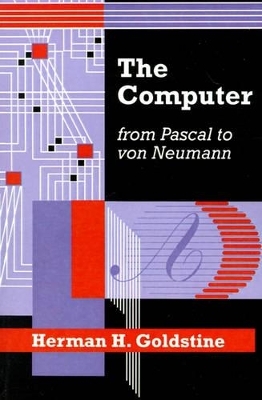
The Computer from Pascal to von Neumann
Princeton University Press (Verlag)
978-0-691-02367-0 (ISBN)
In 1942, Lt. Herman H. Goldstine, a former mathematics professor, was stationed at the Moore School of Electrical Engineering at the University of Pennsylvania. It was there that he assisted in the creation of the ENIAC, the first electronic digital computer. The ENIAC was operational in 1945, but plans for a new computer were already underway. The principal source of ideas for the new computer was John von Neumann, who became Goldstine's chief collaborator. Together they developed EDVAC, successor to ENIAC. After World War II, at the Institute for Advanced Study, they built what was to become the prototype of the present-day computer. Herman Goldstine writes as both historian and scientist in this first examination of the development of computing machinery, from the seventeenth century through the early 1950s. His personal involvement lends a special authenticity to his narrative, as he sprinkles anecdotes and stories liberally through his text.
Herman H. Goldstine is currently Executive Officer of the American Philosophical Society.
*FrontMatter, pg. i*Contents, pg. v*Illustrations, pg. vii*Preface (1893), pg. ix*Preface, pg. xi*I. Beginnings, pg. 3*2. Cllarles Babhage and His Analytical Engine, pg. 10*3. The Astronolnical Ephemeris, pg. 27*4. The Universities: Maxwell and Boole, pg. 31*5, Integrators and Planin~c.ters, pg. 39*6. Michelsori, Fourier Coc~ffic~ientasn, d the Gibbs Phenomenon, pg. 52*7. Boolean Algebra: x2 = xx = x, pg. 60*8. Billings, IIollerith, and the. Census, pg. 65*9. Rallistics ancl the Rise of the Great Mathematicians, pg. 72*10. Blish's Differential Analyzer and Other Analog IJcvices, pg. 84*11. Adaptation to Scientific Needs, pg. 106*12. Renascenrbe and Triumph of Digital Means of Computation, pg. 115*1. Electronic, EAi~rtsp rior to the EN1AC, pg. 123*2. The Ballistic Research Laboratory, pg. 127*3. Differences between Analog and Digital Machines, pg. 140*4. Beginnings of the ENIA(:, pg. 148*5. The ENIAC as a Matl~errratical Instrument, pg. 157*6. Jolln von Nel~mann ant1 the Computer, pg. 167*7. Beyond the ENIAC, pg. 184*8. Tlte Structure of the EDVAC, pg. 204*9. The Spread of Ideas, pg. 211*10. First Calculations on the ENIAC, pg. 225*1. Post-EIIVAC Days, pg. 239*2. The Institute for Advanced Study Computer, pg. 252*3. Automata Theory and Logic Machines, pg. 271*4. Numerical Mathematics, pg. 286*5. Nun~ericalM eteorology, pg. 300*6. Engineering Activities and Achievements, pg. 306*7. The Computer and UNESCO, pg. 321*8. The Early Industrial Scene, pg. 325*9. Programming Languages, pg. 333*10. Conclusions, pg. 342*APPENDIX: World-Wide Developments, pg. 349*Index, pg. 363
| Erscheint lt. Verlag | 21.10.1980 |
|---|---|
| Verlagsort | New Jersey |
| Sprache | englisch |
| Maße | 152 x 235 mm |
| Gewicht | 567 g |
| Themenwelt | Mathematik / Informatik ► Informatik ► Theorie / Studium |
| Informatik ► Weitere Themen ► Hardware | |
| ISBN-10 | 0-691-02367-0 / 0691023670 |
| ISBN-13 | 978-0-691-02367-0 / 9780691023670 |
| Zustand | Neuware |
| Haben Sie eine Frage zum Produkt? |
aus dem Bereich


